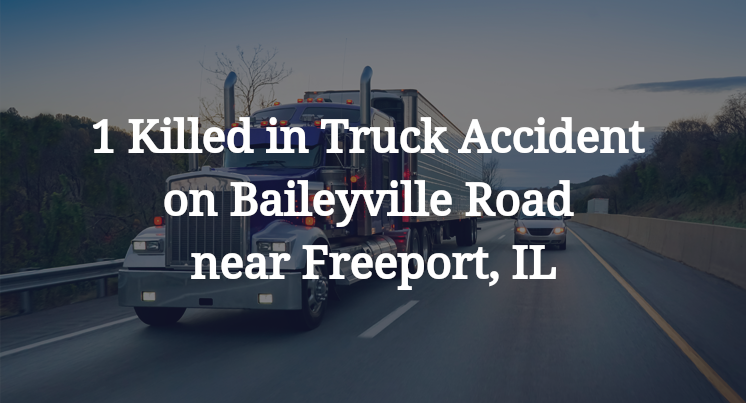1 Killed in Truck Accident on Baileyville Road near Freeport, IL
Stephenson County, IL — March 27, 2025, one person was killed in a truck accident at about 3 p.m. at the intersection of Lamm Road and Baileyville Road.
Authorities said a 2019 Dodge Journey was heading east when it was hit by a northbound semi-truck on Baileyville Road.

The 73-year-old Orland Hills man driving the SUV died at the scene of the crash, according to authorities. His name has not been made public yet.
The truck driver was not injured, authorities said.
Authorities have not released any additional information about the crash south of Freeport. The accident is still under investigation.
Commentary by Attorney Michael Grossman
Anytime I hear about a crash where one vehicle crosses in front of another at a rural intersection, the first thing I want to know is, who had the right of way, and why didn’t the other driver yield? That’s the central legal issue in cases like this, but unfortunately, it’s not always one that gets a thorough answer based on what’s found at the scene alone.
Crashes at rural crossroads like Lamm Road and Baileyville Road often come down to visibility, timing and decision-making. One vehicle is supposed to stop or yield, while the other has the right to proceed. But if either driver misjudges speed or distance — or simply fails to see the other vehicle — that’s where deadly collisions happen. In this particular crash, it appears the SUV was traveling east and was struck by a northbound semi-truck. That could mean the SUV entered the truck’s path, but why that happened is the critical question.
Was there a stop sign that the SUV driver ignored or failed to see? Were there any sight-line obstructions, like trees or signs, that blocked a clear view of approaching traffic? Did the truck driver have time to brake or take evasive action but didn’t? The answers matter, and they’re not always visible in the crash photos.
I’ve seen crash reports that pinned blame too quickly on the vehicle that entered the intersection, only for a deeper investigation to reveal that the truck was speeding or the driver was distracted. That’s why it’s vital to pull the truck’s engine control module data to see what speed it was traveling and when (or if) the brakes were applied. Authorities should also be looking into the driver’s cell phone records, dashcam footage if available and any prior complaints or issues in the trucker's driving history.
It’s also worth asking whether the intersection itself has a history of collisions. Sometimes poor signage, missing warning signals or road layout problems make these crashes more likely. If that’s the case, then this might not just be about what either driver did or didn’t do: it could involve questions of road design and local traffic control.
At the end of the day, what looks like a simple failure-to-yield case may actually involve multiple factors, and it’s only through a full investigation — one that goes beyond the crash scene — that those details come to light. Because when someone loses their life at a rural intersection, the goal shouldn’t be to wrap things up quickly. It should be to find out exactly what went wrong to provide answers for the victim's family.

“These are essential reads for anyone dealing with the aftermath of a truck wreck”– Attorney Cory Carlson